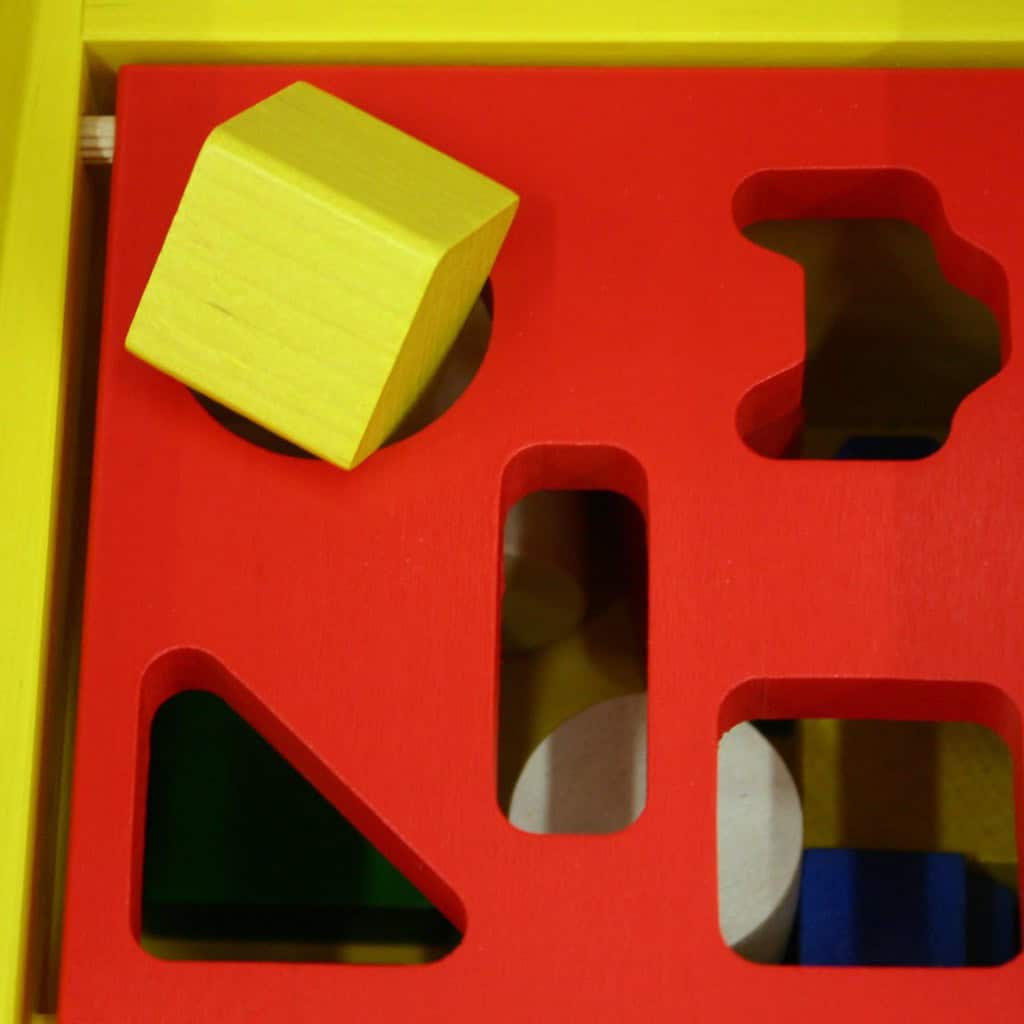Team meetings are one of the biggest opportunities to move the needle for your company. I can’t tell you how often I see businesses that waste time and resources in unproductive team meetings. However, all is not lost. With creative formats, engaging activities, and technology, you can turn your team meetings into productive collaboration machines. Here are some of the team meeting ideas to improve your team meetings and get results.
Innovative Team Meeting Formats

Team meetings are another opportunity to inject some fun. I’ve outlined some creative meeting formats that will make your team call anything but business as usual. Here are some fresh ideas to liven up your team:
The Rotating Facilitator Method is a fun way to mix things up. Here’s how it works:
- Designate a different team member to be the meeting facilitator.
- Allow them to set the agenda and control the conversation.
- Encourage them to try different facilitation tactics.
- Provide feedback and guidance to help them improve as a leader.
This approach helps develop leadership qualities within the team. It also gives other team members a chance to offer their point of view on the meeting.
Stand-Up Meetings enable brief status updates. These are perfect for daily team check-ins. Keep everyone on their toes and limit this meeting to 15 minutes max. Ask each team member to answer the following three questions:
- What did you do yesterday?
- What are you doing today?
- Any roadblocks?
Walking Meetings are an effective strategy to boost creativity. This can be great for a change of pace. Take your team outside for a walk to encourage new ideas. You’ll also get bonus points for sneaking in some physical activity during the workday.
Silent Meetings sound strange, but they can be very effective for focused discussions. Here’s how it works:
- Prepare a document with a list of items to discuss in the meeting.
- Give everyone time to read through the document and make comments silently.
- Answer any questions and discuss comments after the meeting.
This format ensures all team members have a say. It’s particularly beneficial for quieter team members who may be slower to process information.
Themed Meetings drive team member engagement. Select a different theme for each meeting. This could be any upcoming holiday, industry trend, or company value. Work the theme into the conversation, agenda, and maybe even attire. This makes the meeting more enjoyable and could even lead to new insights.
These meeting formats will breathe new life into your team meetings. Test out different combinations to see what the best fit is for your team. And keep in mind that the primary goal is to encourage better conversations and collaboration. So keep trying different things until you find the meeting format that works best for your team.
Ice Breakers and Team-Building Activities
Team building activities aren’t just for off-sites. I’ve used these activities in regular meetings and they are fantastic for building a stronger team. They all help team members feel more connected and creative.
Quick Question Rounds are the easiest activities to implement. Here’s how they work:
- Prepare a list of fun and thought provoking questions
- Ask one question at the start of each meeting
- Give everyone a chance to answer quickly
- Here are a few example questions:
- What is the best piece of advice you have ever received?
- If you could have any superpower, what would it be?
- What is your favorite way to relax after a long day?
Two Truths and a Lie is another timeless game that people love. Each person will share three things about themselves. Two are true and one is a lie. Then, the rest of the team guesses which one is a lie. It’s always a blast and you’ll learn some surprising facts about your team members.
Virtual Scavenger Hunts are great if your team is remote. Create a list of basic items any person would have around them. Then, give the team 5 minutes to find as many of the items as possible in their house. The person who brings the most items wins. It’s a fun game to get people moving and adds a little friendly competition to the team.
Collaborative Problem Solving Exercises are fantastic for building teamwork. Propose a hypothetical problem. Then, break the team into small groups to brainstorm solutions. After, bring everyone back together to share our ideas. This activity is great for boosting creative thinking and team work.
Personality Quiz Discussions seem like a fun game, but you’ll actually learn something. Ask team members to take a simple personality quiz before the meeting. Then, we discuss the results together as a group. Specifically, discuss how teams can work together effectively when made up of different types of personalities. This activity is great for helping teams understand and appreciate different work styles.
These activities are so much more powerful than regular icebreakers. They create shared experiences and make the team stronger. Feel free to get creative and modify these activities to fit your team’s culture and personality.
Effective Agenda Planning and Templates

AN agenda is arguably the most important aspect of an effective meeting. I’ve honed my agenda over thousands of meetings, and here’s what I’ve learned is most effective.
Purposeful Agenda Structure (e.g., clear meeting objective, list of discussion topics, time allocated to each topic, person leading the discussion, expected outcomes) ensures the meeting stays on track and every discussion is productive.
Time Boxing prevents meetings from running long. Set a specific amount of time for each agenda item, and stick to it. If a topic requires more discussion, schedule a separate meeting to discuss it. This communicates a clear respect for everyone’s time and also keeps the meeting moving.
Action Item Assignment and Follow-Up with Deadlines (e.g., discussion items and the next steps, who it’s assigned to, and the deadline) ensures each discussion results in action, and every task is assigned to move projects to the finish line.
Pre-Meeting Preparation Checklist for Proactive Discussions (e.g., review previous notes, have updates on the action items to share, read any pre-reads, question prepared) ensures everyone comes prepared for a proactive discussion. Send this checklist with the agenda to set the expectation that everyone should come prepared for a proactive discussion.
Collaborative Agenda Tool includes everyone in the discussion. Whether that’s a shared document or specialized software, use a tool that allows everyone to add discussion items or vote on priority. This ensures everyone shows up and asks questions that matter to the broader team.
Just like an effective agenda is a living document, be flexible enough to make changes, but structured enough to keep the meeting moving. With a little practice, you’ll find the right balance for your team.
Maximizing Engagement in Virtual Meetings
Virtual meetings are a unique environment, and I’ve adapted by turning these challenges into opportunities for creativity. Here are some strategies to increase engagement.
Interactive Polling and Surveys are a great way to involve everyone. You can use them to:
- Poll the audience for quick opinions
- Make group decisions
- Survey the audience to ensure they understand key points
- Gather feedback on the meeting
Using these features, even large meetings can have a conversation.
Breakout Room Discussions are an easy solution to divide your meeting into small groups. You can use them for:
- A brainstorming session
- In-depth problem solving
- Facilitating conversation between new team members
Rotate and change the group size to mix relationships between team members.
Virtual Whiteboard Collaboration finally brings visual collaboration to virtual meetings. You can use it for:
- Mind mapping
- Process flow charting
- Group brainstorming
This helps visual learners engage with the content and makes complex ideas simple.
Gamification Elements within the platform has some native features like:
- Points
- Badges
- Leaderboards
You can assign points or badges for different actions people take on the call and use leaderboards to make meetings more competitive.
Camera On Policy and Its Impact is an interesting discussion. Having cameras on creates a more personal connection and holds people more accountable. However, keep in mind everyone’s home situation. Not everyone has an office to work from, and it’s tough to have cameras on with kids running around.
Remember, increasing engagement in virtual meetings just requires more creativity. With a little creativity and the ideas above, you can create an interactive and productive meeting. Keep experimenting to find the best solution for your team.
Time Management Strategies for Efficient Meetings

Time is the most precious commodity we have, so I always strive to run efficient meetings that honor this principle. Here are the tactics I’ve implemented to optimize every minute.
Clear Start and End Times are Non-negotiable. Communicate these times ahead of the meeting. Start the meeting on time even if only a few people are there. End the meeting on time even if you didn’t get to everything. Doing this establishes a baseline level of respect for everyone’s time.
The Two-Pizza Rule for Team Size, coined by Jeff Bezos, ensures that you don’t invite more people than necessary to the meeting. Use the “two-pizza” rule to keep the group small and engaged.
The Parking Lot Method prevents any stragglers from derailing the meeting. In short:
- Create a visible list labeled the “Parking Lot.”
- If someone brings up an off-topic argument add it to the “Parking Lot.”
Conclude the meeting by either addressing these points or scheduling a separate meeting to discuss them further.
This ensures the meeting stays on track without alienating team members with great ideas.
Role Assignments with a Time Focus help keep the meeting on schedule. Assign a few of these roles to your team:
- Timekeeper: Tracks how long each agenda item should take
- Facilitator: Keeps the meeting moving and on topic
- Note-taker: Records key takeaways and decisions
Rotate these roles so everyone learns how to be more efficient with their time.
Timer Apps for Entire Group Discussions are effective in creating a sense of urgency. You can leverage a timer app on your computer or buy an actual timer. Set it for each agenda item so that everyone in the meeting feels a level of pressure to stay on topic.
Efficient meetings do not mean meeting faster. Efficient meetings mean respecting everyone’s time and achieving everything you set out to accomplish. If you follow these tips, you’ll find your meetings are more productive and everyone thanks you for it.
Fostering Participation and Idea Sharing
It’s important to create an environment where everyone feels comfortable sharing ideas. I’ve witnessed teams completely level up as a result of mastering this one skill. Here are a few strategies I’ve found effective.
Round-Robin Speaking: To ensure everyone participates, go around the room (either virtually or physically) and give each person a chance to speak. This prevents a few people from dominating and brings out some of the quieter team members.
Anonymous Idea Submission: Using digital platforms that allow anonymous idea submissions is another great strategy. This ensures even those who might feel uncomfortable sharing ideas in front of others can participate. It’s particularly effective for sensitive topics and power dynamics.
Devil’s Advocate Role: Designate someone to play the devil’s advocate in each meeting. Their job is to respectfully challenge assumptions and offer alternative perspectives. Rotate this person in each meeting so it doesn’t feel like one individual is always playing the contrarian role.
Brainwriting: Brainwriting is an excellent strategy to ensure even shy participants contribute ideas. Here’s how it works:
- Pose a problem or topic.
- Give everyone time to silently write down some ideas.
- Pass papers around the room so everyone can add to other people’s ideas.
- Then, discuss the ideas as a group.
It allows everyone to contribute ideas without feeling the pressure of speaking ideas out loud.
Create a Safe Environment for Diverse Opinions: Finally, establish ground rules to ensure everyone feels comfortable sharing diverse opinions. Here are some example ground rules:
- No interrupting.
- Critique ideas, not people.
- Encourage crazy ideas.
- Build on others’ ideas.
Make sure you remind your team of these ground rules frequently, and also model following these behaviors yourself.
Keep in mind that participation isn’t just about getting everyone to verbally share an idea. It’s also about creating an environment where everyone feels comfortable to share ideas. With these strategies, you’ll unlock the collective intelligence of your entire team.
Leveraging Technology for Enhanced Meetings
Technology is another great ally to make meetings more productive. I’ve seen teams significantly improve their collaboration with the right software. Here’s how you can use technology to your advantage:
Digital project management tools: Integrating project management tools into a meeting makes it more efficient. Use tools like:
- Trello for visual task management
- Asana for project management
- Jira for engineering teams
Real-time document collaboration: Document collaboration tools are excellent for group work. Google Docs and Microsoft 365 are prime examples of these tools. Use them in meetings for:
- Collaborative note taking
- Live project document editing
- Group brainstorming
This ensures everyone is engaged, and you walk away with immediate results.
AI meeting assistants: These tools are useful. AI meeting assistants can:
- Transcribe meetings in real time
- Generate meeting summaries
- Send reminders of action items
People can then pay attention to the discussion instead of taking notes.
Screen sharing best practices: Clear screen sharing makes communication more effective. When sharing your screen, be sure to:
- Close any irrelevant apps
- Utilize presenter mode in slide decks
- Zoom in on anything you want people to focus on
High-quality visuals help people understand, and it keeps everyone focused.
Virtual reality meeting spaces: Virtual reality meeting spaces are new, but they offer an
immersive experience for remote teams. This type of tool isn’t widely adopted, but it allows remote teams to feel like they’re in the same room. It fosters that sense of presence and connection that’s nearly impossible in virtual meetings.
Keep in mind that technology should optimize meetings, not complicate them. Choose tools that make sense for your team and workflow. Additionally, be willing to change as new technology emerges. The key is to make meetings more efficient, engaging, and productive.
Measuring Meeting Effectiveness and Collecting Feedback
Continuous improvement requires measurement, and I’ve found that measuring meeting effectiveness on a regular basis results in better meetings. Here are the strategies I’ve employed to collect useful data and feedback.
Post-Meeting Surveys and Metrics: You can create a simple survey to gauge meeting effectiveness by asking:
- Did you feel the meeting was a good use of your time?
- Did we accomplish what we set out to do?
- Rate your engagement on a scale of 1-5.
- What could be improved?
Using a 1-5 scale ensures easy categorization, and people can also include more qualitative feedback in the comments section.
Action Item Completion Rate Tracking: I ask you to record the action items from each meeting and then note how many of them are actually completed by the next meeting. This is a brilliant way to quantify how effective your meetings are at driving progress.
Time Saved vs. Previous Meeting Formats: This is a very powerful metric. One thing I did early on at Help Scout was calculate the aggregate time we saved by switching our meeting cadence from frequently to hardly ever.
Participant Engagement Scoring: You can ask the person leading the meeting to score each participant’s engagement on a 1-10 scale. You obviously don’t want to be too obsessive about measuring this, but if you do it consistently over time, you can begin to notice trends.
Quarterly Meeting Effectiveness Reviews: Every quarter, I urge you to gather the metrics you’ve been tracking along with the feedback you’ve been collecting and look for trends. What areas in the meetings can we improve? Then, share these insights with the team and iteratively adjust your meeting strategy based on the insights gleaned from data and feedback.
Remember, the point isn’t to have perfect meetings. The point is to improve. These are the meeting measurement tools that will guide your meeting improvement efforts. Be open to feedback and make changes when necessary. With sustained effort, your meetings will become more effective, productive, and even enjoyable.
To Conclude
These are the team meeting strategies we use today. I’ve personally tested each of these strategies and watched them transform productivity and engagement in team meetings. Rotating leadership roles in meetings Using more technology You now have a framework to change your team meetings. Remember, the key to success is consistency.
Don’t make massive changes all at once. Instead, test a small change, measure the impact and iterate. Over time, you’ll build a meeting culture that people enjoy because it’s productive, inclusive and a good use of their time. And when you do that, you unlock your team’s potential to collaborate and innovate using these same powerful meeting strategies.






